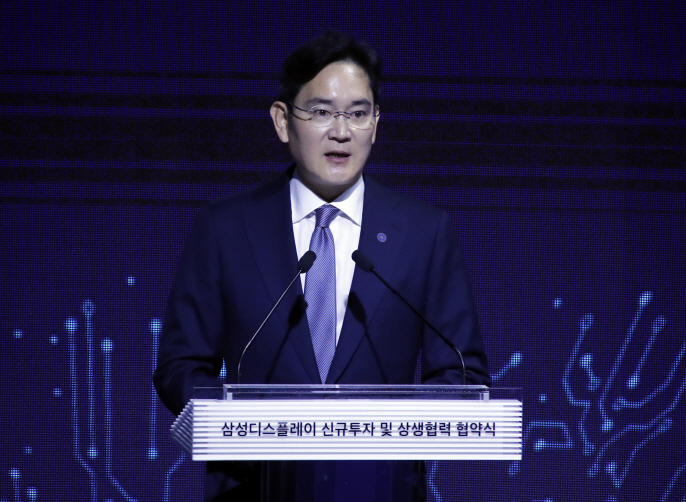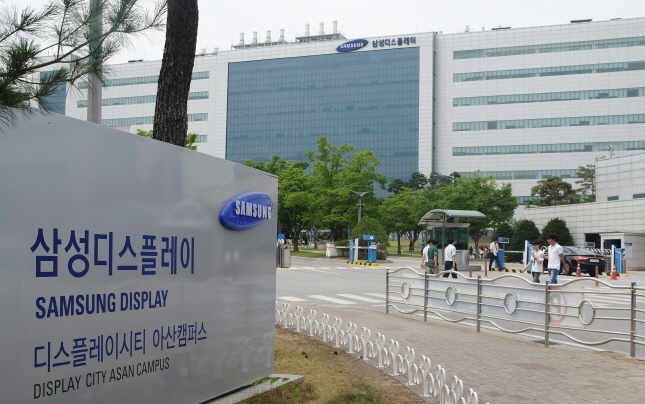
Samsung Electronics Vice Chairman Lee Jae-yong announces a 13 trillion-won (US$10.9 billion) investment plan of Samsung Display Co. at the company’s factory in Asan, 90 kilometers south of Seoul, on Oct. 10, 2019. (Yonhap)
SEOUL, Oct. 10 (Korea Bizwire) — Samsung Display Co., a major display panel maker here, said Thursday it will invest 13.1 trillion won (US$10.9 billion) by 2025, to upgrade its liquid crystal display (LCD) production facilities and produce more advanced displays amid a slump and increased competition.
Panel makers here, including its large local rival LG Display Co., have been in a struggle to deal with weak demand from TV and smartphone makers, and increased competition from Chinese rivals, shifting their focus to organic light emitting diode (OLED) panels.
Under the plan, the wholly owned subsidiary of South Korean tech giant Samsung Electronics Co. will spend 10 trillion won to upgrade its existing facilities and accelerate a shift into next-generation panels.
The remaining amount will be spent on developing high-end display technologies, especially focusing on the quantum dot materials — utilized to enhance performance in key picture quality areas — and other solutions.
In detail, Samsung Display will revamp its LCD production lines in Asan, located south of Seoul, to focus on the quantum dot displays.
The renovated production line will have a monthly capacity of 30,000 sheets of 65-inch quantum dot displays, with the output to be gradually expanded down the road, according to Samsung Display.
In July, LG Display Co. also said it will invest 3 trillion won for its OLED production line in South Korea to expand its production capacity for premium panels.
Stung by plunging LCD prices, Samsung Display suffered a 61 billion-won loss on sales of 11.8 trillion won in the first half of this year.
LG Display said in September that it will begin a voluntary retirement program as part of cost-cutting efforts amid mounting losses from its liquid crystal display (LCD) business and marks a transition from money-losing LCDs to a more profitable OLED business.
Last month, LG Display named LG Chem Ltd. President Jeong Ho-young as its new CEO to replace incumbent chief Han Sang-beom.
LG Display’s net losses deepened to 613 billion won in the first half of the year from 350 billion won in the year-ago period due mainly to tougher competition with Chinese rivals.
The series of massive investments may help South Korea maintain its lead in the display industry down the road and brace for the escalating protectionism around the globe, including the prolonged tension between the United States and China.
Displays have been cited as one of the major future growth engines by South Korea, along with chips, automobiles, biotechnology products and carbon fibers.
South Korea plans to invest 111.3 billion won in research and development projects for displays in 2020, which marks more than a threefold growth from the 25.4 billion won allocated this year, according to the Ministry of Trade, Investment and Energy.
Samsung, meanwhile, has been rolling out aggressive investments in different areas of the tech industry amid the intensifying competition in the market.
Earlier this year, Samsung said it will invest 133 trillion won by 2030 to expand its non-memory and foundry business to take the top spot in the high-tech and lucrative sector.
(Yonhap)







